13 Vintage License Plates That Have Strong Collector Demand
Vintage license plates have a special charm that draws people in the moment they see one. Each piece carries a story that reflects the roads, the cars and the people of its time. Many collectors enjoy the way old plates show different materials, colors and shapes that are no longer used today. You can almost picture how these plates once moved across long highways or small town streets. Some plates survived in great condition, while others show gentle aging that adds even more character. It feels rewarding to come across a plate that holds history in such a simple form.
This post may contain affiliate links, which helps keep this content free. Please read our disclosure for more info.
1921 Alaska Plate
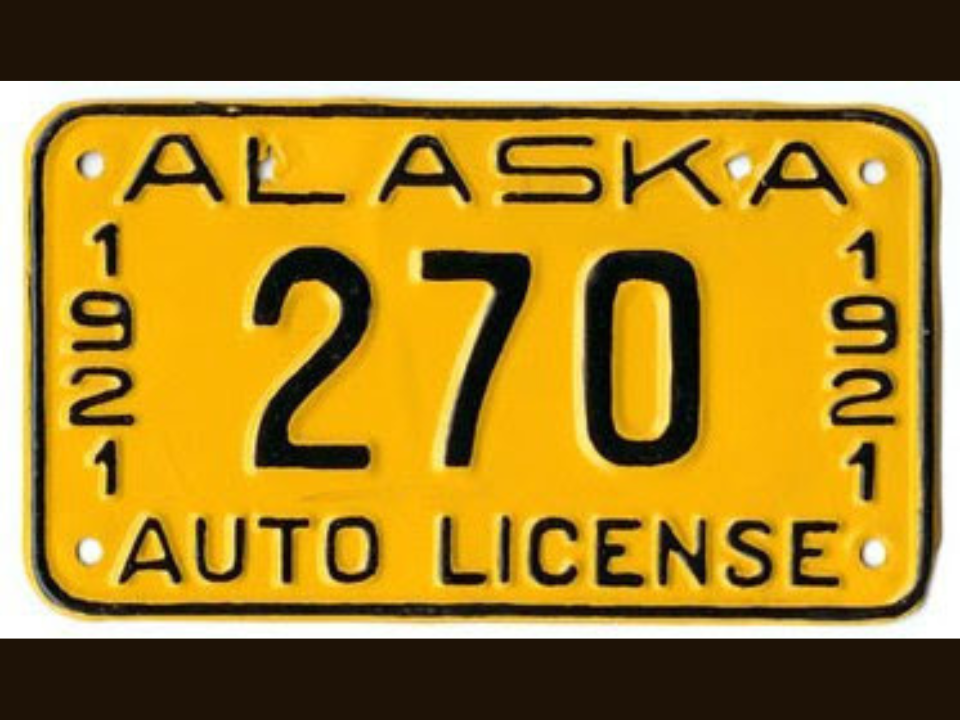
This plate is one of the rarest from any United States region due to Alaska’s small population at the time. Collectors are drawn to its remote origin and the early style that shows how unique registration looked in the territory. Its simple layout and strong numbering make it a standout piece.
Because so few plates survived, each one that appears on the market attracts strong interest. Plates with most of their original finish are especially admired by long time collectors. Market values often reach around $67 500 for the best examples.
1928 Massachusetts Plate
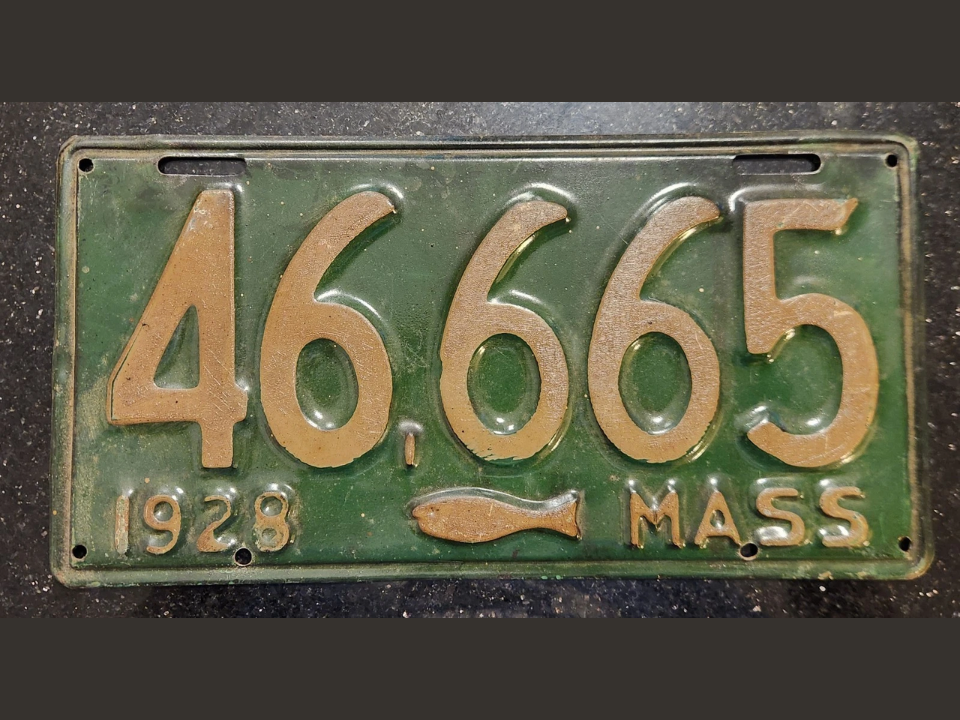
This plate comes from a period when automobile use was growing quickly in the Northeast. The styling is simple yet very reflective of the era, which adds strong appeal for collectors who enjoy early state designs. Many plates from this period were discarded, making good examples harder to find.
Collectors enjoy the crisp numbering and the sturdy feel that these early plates often carry. Plates with strong paint and minimal rust tend to sell quickly. Many recorded sales fall near $43 000 for exceptional pieces.
1914 Pennsylvania Plate
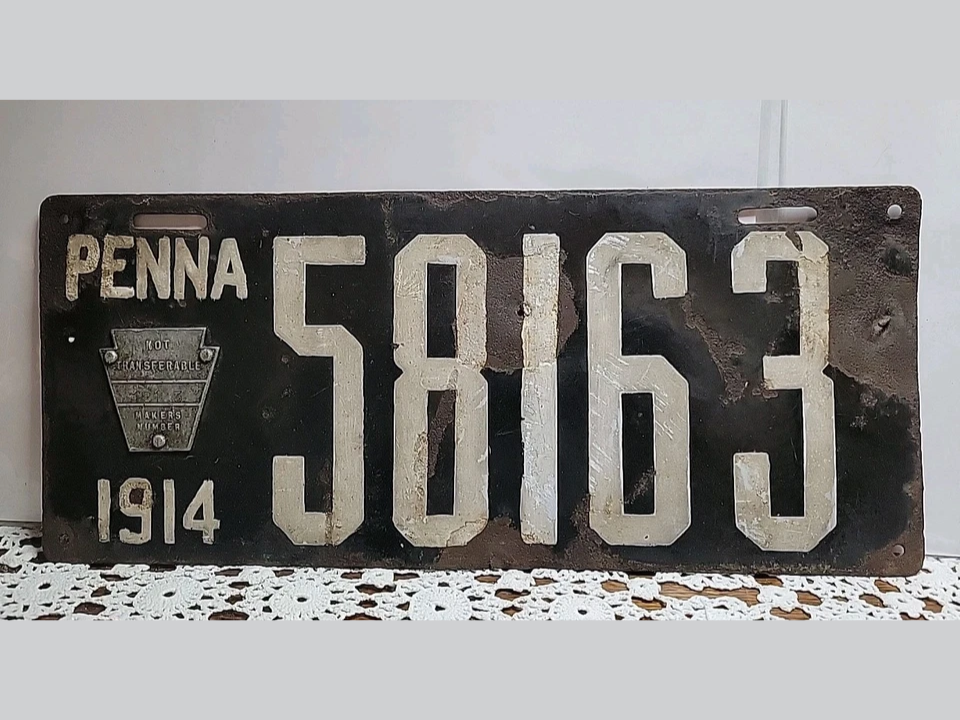
This Pennsylvania issue comes from the early years of automobile regulation in the state. The plate shows the plain styling and large numbering that were common during that time. Collectors enjoy how this plate reflects the earliest development of state registration systems.
Due to its age, most surviving examples show rust or fading, so plates with clear surfaces stand out immediately. Matching sets are almost impossible to find, which increases interest even further. Many examples reach values around $37 000.
1930 Ontario Plate
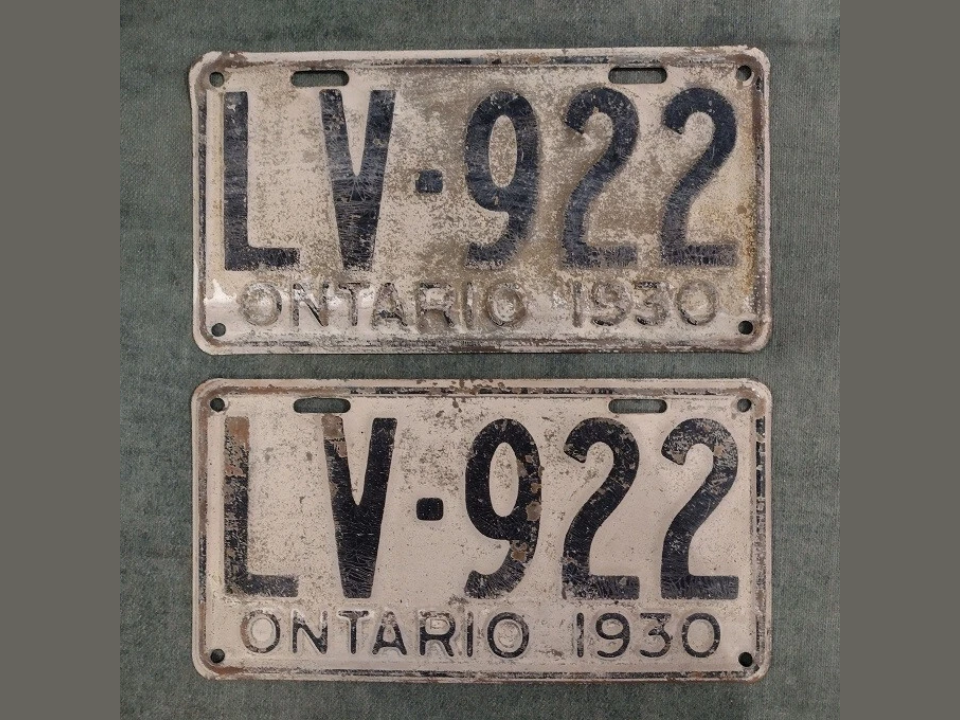
Collectors from both Canada and the United States appreciate the early Ontario issues due to their clean layout and memorable look. The plate represents a time when Canadian provinces were developing their own styles for registration. Many collectors enjoy the design because it feels timeless and simple.
Surviving examples with consistent paint and even aging are especially admired. The plate is also valued for its connection to cross border automotive history. Market values usually reach around $35 000 for strong examples.
1950 Illinois Ivy Green on Off White Plate
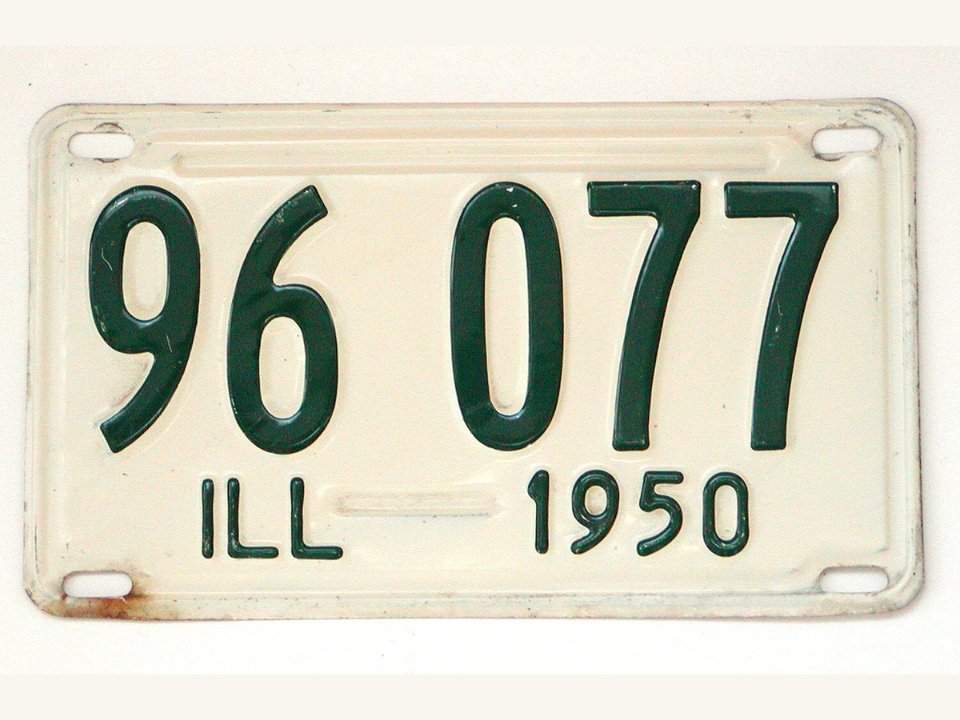
This plate marks a shift in Illinois toward aluminum production, which gave it a lighter feel and a new look compared to earlier steel plates. Collectors enjoy the fresh color style that stands out among other mid century plates. The combination of color and year makes this issue memorable.
Finding plates with strong color is challenging because many faded over time. Pairs are especially admired when both pieces show similar wear. Values commonly fall between $4 000 and $8 000.
1948 Illinois Canary Yellow on Dark Blue Plate

The bright color scheme of this plate gives it a lively appearance that collectors enjoy. It comes from the early post war years when materials were shifting and states were experimenting with bolder styles. The contrast of dark blue and yellow makes it a favorite among Illinois collectors.
Examples with clean edges and strong paint are especially admired since many plates from this year were heavily used. Matching sets tend to gain even more interest due to their display appeal. Typical values range from $5 000 to $10 000.
1960 Ontario Black Serial on White Vintage Plate
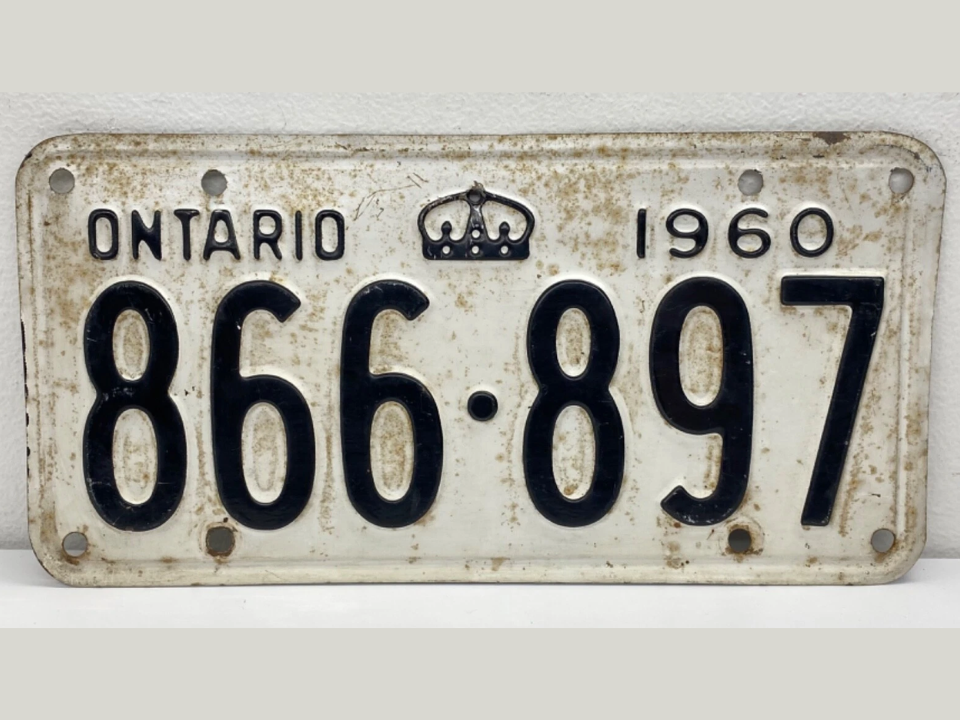
This plate from Ontario features a clean white background that highlights the black numbering in a sharp way. Collectors appreciate the simple style that still feels classic despite being from a later decade than most high value plates. The vintage lettering adds a special touch that stands out.
Plates with clear surfaces and minimal rust are more desirable since white backgrounds often show wear easily. The clean design makes it easy to display in a collection. Market values often fall between $1 500 and $3 000.
1935 Montana Passenger Plate
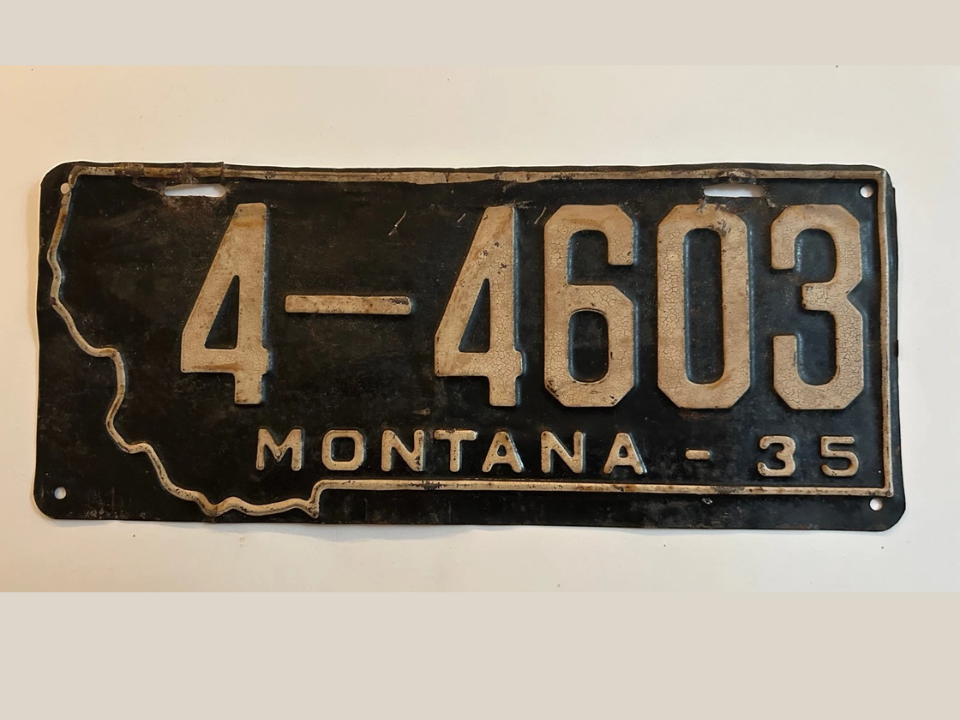
This Montana plate reflects the look of mid 1930s registration with its clean layout and simple embossing. Collectors appreciate how it represents a developing road system and the growing popularity of long distance travel. Its understated style helps highlight the history behind it.
Examples with consistent paint survive in low numbers, making each good find meaningful to collectors. Matching pairs are especially difficult to locate and raise interest further. Market values often range from $8 000 to $12 000.
1913 California Porcelain Plate
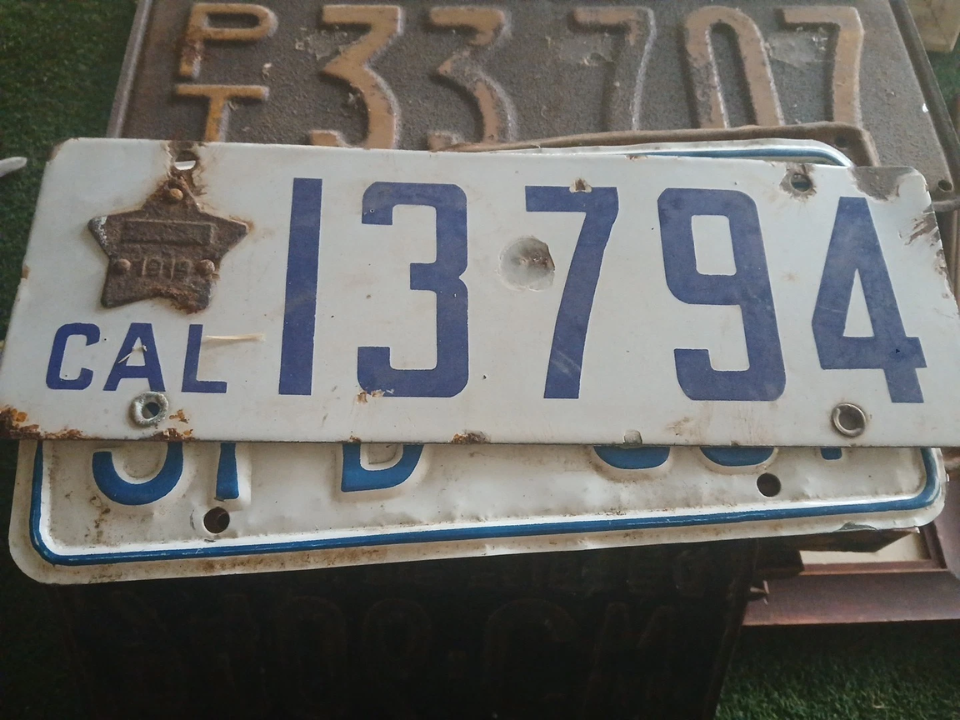
This early California porcelain plate comes from a period when many states were experimenting with ceramic finishes. Collectors appreciate its glossy surface and delicate colors that have survived more than a century. The fragile nature of porcelain makes surviving examples scarce, which adds extra interest.
A plate in strong condition often shows small chips or hairline marks, yet pieces with minimal damage can be striking display pieces. Interest rises even further for plates with legible numbering and clean glazing. Current values commonly fall around $9 000 to $15 000 depending on overall appearance.
1916 Arizona Plate

This issue sits among the first years of Arizona statehood, which gives it a strong place in early automotive history. The plate usually features bold embossing and a layout that feels very different from modern standards. Collectors appreciate the rustic design that reflects the region’s early automobile era.
Few examples remain in the condition collectors hope for, which raises interest in any plate free of rust breakthroughs. Plates with crisp characters and solid paint surfaces can be among the most admired pieces from this period. Market values often settle around $12 000 to $20 000.
1932 Hawaii Territory Plate
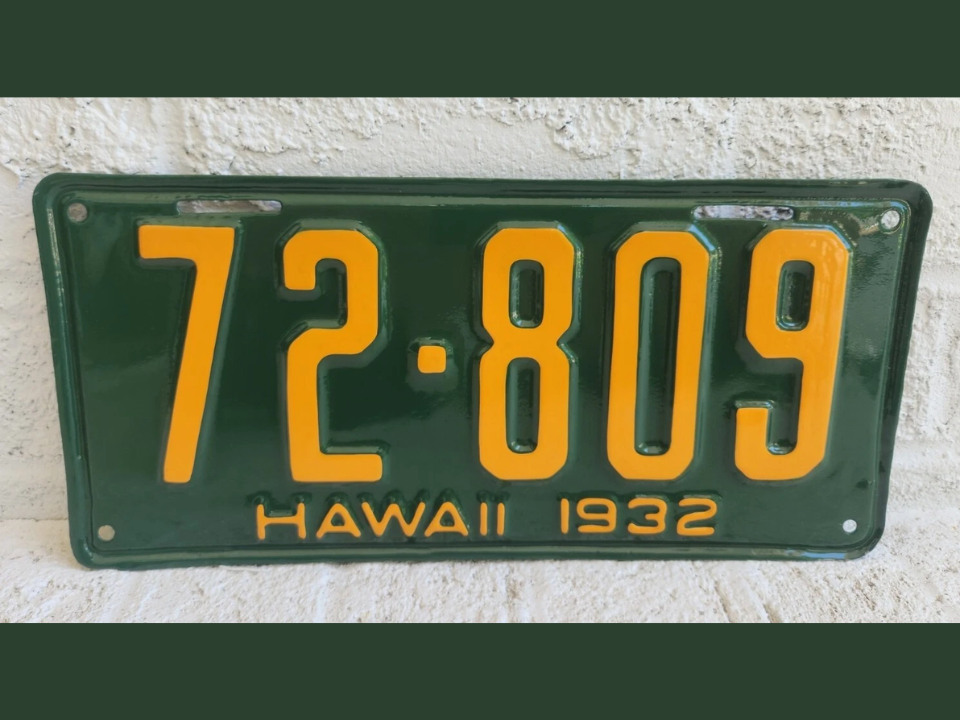
This plate predates Hawaiian statehood and comes from a time when cars were far less common on the islands. The smaller local population meant fewer plates were issued, which contributes to the rarity seen today. Collectors enjoy pieces that still show their original finish and territorial identity.
Color variations appear between surviving examples due to age, climate and storage conditions, making each one feel unique. Plates with strong paint and consistent numbering tend to gain the most attention. Current values often land around $14 000 to $22 000.
1915 Idaho Plate
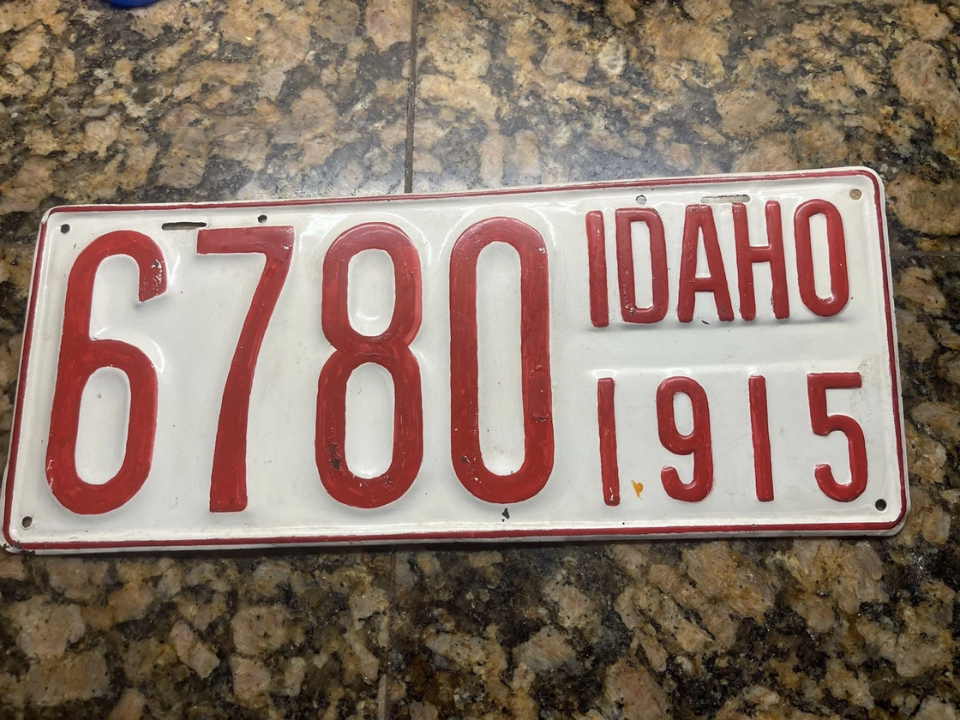
This early Idaho plate reflects a time when road systems were still developing and vehicle numbers were low. The design uses simple layouts that collectors enjoy for their early-year authenticity. Plates from this year appear rarely at shows or auctions.
Many examples have surface rust or color loss, so plates that still show strong paint become the most desirable. A clean border and legible numbering increase overall charm and collector interest. Market value typically falls around $8 000 to $14 000.
1942 New York World War II Steel Plate
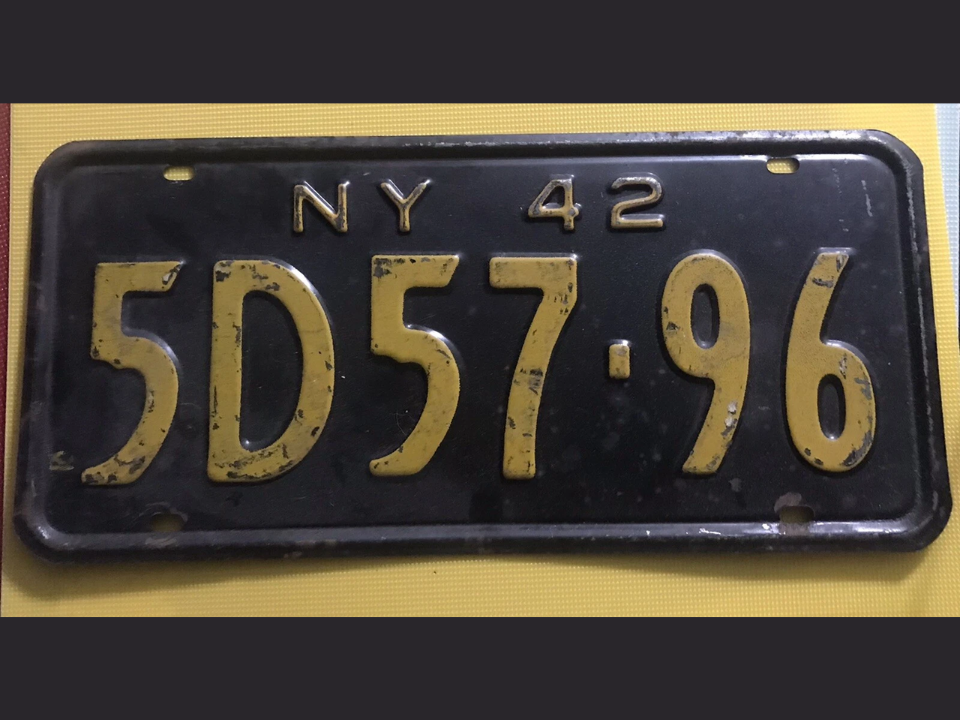
During wartime shortages, New York issued steel plates rather than heavier aluminum versions. These plates often show wartime character through simpler construction and notable paint wear. Collectors appreciate the link to history and the practical adjustments states made during the conflict.
Examples that survive with most of their original paint are uncommon, which increases interest among enthusiasts. Matching pairs tend to be especially admired when the numbers remain clearly defined. A strong example may bring $900 to $1 800.
This article originally appeared on Avocadu.
